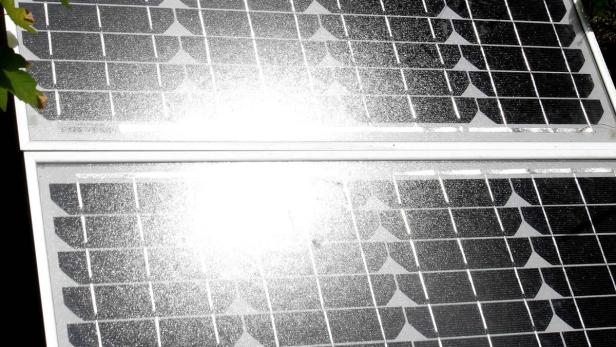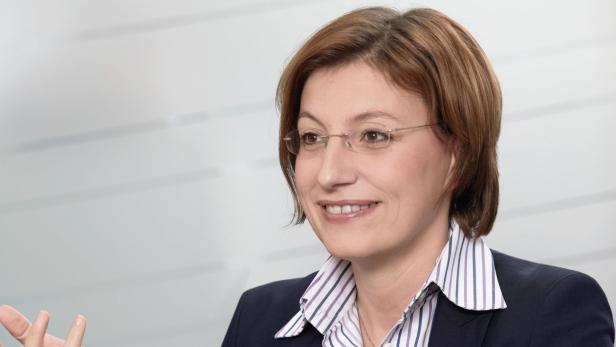
Solar cooling: Wien Energie expands its photovoltaics model
Dieser Artikel ist älter als ein Jahr!
As of the end of 2013, Wien Energie will have eleven finished “people’s solar power plants” that will supply around 1,600 Viennese households with electricity. Are we seeing a solar boom in Vienna?
I would not call it a solar boom yet, but it is a clear sign that things are moving in this direction. We have a total of 860,000 households in Vienna, and now we supply about 2,000 households with the photovoltaic energy generated by the people’s solar power plants. But that’s not all. We are implementing hundreds of photovoltaics projects in our core region.
The panels for the people’s solar power plants are very popular. There are waiting lists, and they are usually sold out very quickly. Do you think that this is because the residents of Vienna really want to support solar power, or is the model so popular in part because of the 3.1 percent return?
Our analyses show that 60 to 70 percent of the customers buy the panels to do something good for the environment, and the rest because of the attractive return on their investment.
The concept is seen as innovative, and has earned much praise. Have other customers contacted you to inquire about collaborating?
There has been a great deal of interest in the project, as we have also seen at conferences. We are frequently contacted by city governments and customers who want to do something in this area together with us. Other companies have followed our example and implemented projects on their own. We are already taking the next step, because we always want to stay ahead of the curve.
What is the next step?
We will introduce similar people’s models for wind power. And we will expand the current model, because there is still quite a bit of potential. We will soon be presenting a new participation model together with the supermarket Spar for its customers.
Will there be further people’s solar power plants?
Our customers will determine this – and right now, it looks like there will be. But we will also expand the model. It will not stay the same as it is now. We will offer a wider range of products.
What makes solar power attractive for a country like Austria? A country like Portugal has many more hours of sunshine a year, but little has been invested in solar power there. The country’s power utility, REN, says that it is too expensive.
It depends strongly on the promotion policy in each country. There was certainly such a strong boom in Germany because the government provided a great deal of funding for photovoltaics. This was also the case in Austria for a time, there were implementation promotions for the systems. Such support was not common in all countries. And there are differences at lower levels: Some people see their investments in the people’s power plant panels from a purely financial perspective.
Why did Wien Energie decide to become active in this area?
Because that is what our customers want. We cannot ignore reality. That is why we continue to develop and refine products until they meet our customers’ demands. When this is no longer the case, we will no longer offer the products in question.
You offer not only models for private customers, but have also offered photovoltaics for cities, companies, and industry since July 2012. How has the response been?
Very good. Numerous customers are interested in making a contribution to expanding renewable energy. And the number of such customers is growing every day.
Who does this include?
One of our current customers is Spar. We will soon be launching a model with them where we will install photovoltaic systems on the roofs of supermarkets, and the power will be used directly in the supermarket. We have many other customers, as well, including the residential developer Wiener Wohnen. There are very many cities that want to cover their administrative power needs with photovoltaic systems, and such projects have been implemented in Trumau and Perchtoldsdorf, for example. The range is broad.
Does this mean that the primary focus is having customers cover their own needs with solar power?
Exactly, that is the case for 99 percent of our solar projects. We try to select the size of the system so that the system covers a large share of the customer’s consumption. We cover 5 percent of the consumption in some buildings, and 25 percent in others – it depends on whether it is an office building, where power is generally consumed during the day.
Will this change at some point, for example when power from the sun can be stored?
Yes. In the spring, we want to introduce a system that combines photovoltaics and storage. We will offer this combination to customers.
How does that work?
It is basically a local storage system with a controller. Consumption is measured in the photovoltaic system, and the system will send signals to the storage system. This will tell the storage system when it should charge. When no electricity is being generated, it will not charge, and power will be drawn from the storage system when it is needed.
Will there also be additional models for business customers?
Yes. We will offer solar cooling. Here, we will use photovoltaic systems for chilling systems. The control system will be set up so that the chilling system will run when the photovoltaic system generates electricity. We will be introducing this onto the market soon.
Photovoltaics grew by 157 percent in Austria in 2012. How did things develop in Vienna?
We had 18 megawatts of installed capacity at the end of 2012, and a good 50 percent of these systems belong to Wien Energie. We have only been active in photovoltaics for two years; we had intentionally decided not to enter this market until then. There were several reasons for this. One was economic viability, and another was the environmental factor. For the old panels, the disposal question had not been solved, and the harvest factor was not high enough (editor’s note: this refers to the energy produced by the photovoltaic system compared with the energy required to manufacture the system).
This has changed in recent years, and the environmental concerns have been eliminated entirely. We entered the photovoltaic market at that point, and have captured a market share of 50 percent in two years. And I am confident that we will achieve a share of 90 percent in our core region in the next two to three years.
That is an ambitious goal. When you say that it would not have been economical before, do you mean that this has changed across the board?
How economical such a system is depends largely on the parameters of the individual project. But when we have a customer for which the basic conditions are good and power consumption can be coupled with generation, then the project is generally worth pursuing. We also guarantee a stable price development in such cases where the generated electricity is consumed.
Don’t you lose money in such cases?
The customer has planning security, and we achieve our minimum yield. We budget the system so that it pays for itself over a period of 20 to 25 years. It’s a win-win situation.

© Wien Energie
Solar and wind power, renewable energies in other words, are dependent on the weather. Doesn’t the installation of photovoltaic systems make your system instable, or what can you do to prevent that?
That is one of the essential issues. We are fundamentally different from an individual customer who installs a system on the roof. Every photovoltaics system that we install is metered online and centrally tracked. We ensure that all decentralized generation systems that are connected to the system are monitored by the main control system. We can react immediately when consumption and generation become mismatched. This is where we differ from locally controlled systems – we focus on ensuring the reliability of the system, and can balance out any fluctuations with our large number of variable-output power plants to guarantee stability. This will also be the model of the future in my opinion.
We think a key component is missing right now, namely the output market. Output that is always there has a different value than output that is not always there. Customers that implement a project with us have a higher level of security than people who have a system built by an electrician.
But homebuilders are not a target market for you now, are they?
Not right now. We are expanding into the market by beginning where there is the most potential, and are moving forward from there.
What do you think is the greatest challenge in the energy transition?
The greatest challenge in the energy transition is the fact that the electricity market has become a hybrid between a market and promotion mechanism. We need three things to eliminate the current distortions on the market. First, renewable energies must be supported with intelligent funding, and must participate on the open market. This requires investment funding or a market premium model instead of a supply rate.
Second, an output market needs to be set up. Plannable production may not be assigned the same value as unplannable production. And third, we need a functioning CO2 market. When the market is functioning again, it will be easier to expand the networks and the storage systems.
Team Austria won the Solar Decathlon in California – is this a good sign for Austria?
It is definitely a good sign because it garners international attention for Austria’s abilities and Austrian innovators. Innovation is the key that will unlock the energy future for us. I am certain that the energy world as we know it today will no longer exist in 20 years. A great deal will happen in the area of urban technologies. New ways of using, generating, and managing energy will drive our industry.
Our guest
Susanne Zapreva
Susanna Zapreva is managing director of Wien Energie GmbH. She studied electrical engineering at the Vienna University of Technology and graduated in 2000. She began her career as a consultant in the energy industry, and joined Wien Energie in 2001.
Kommentare